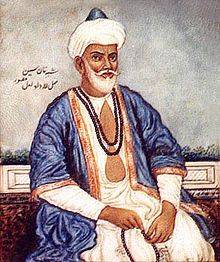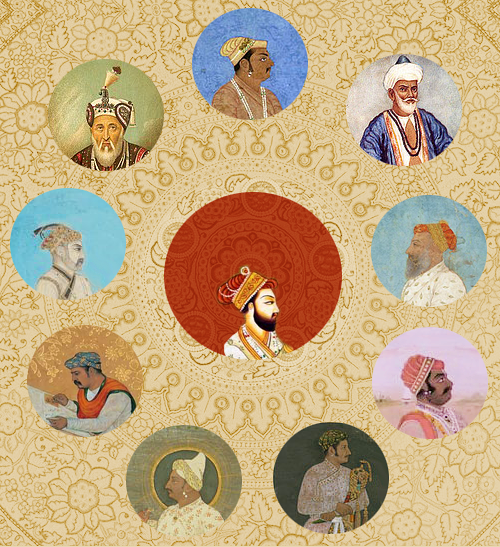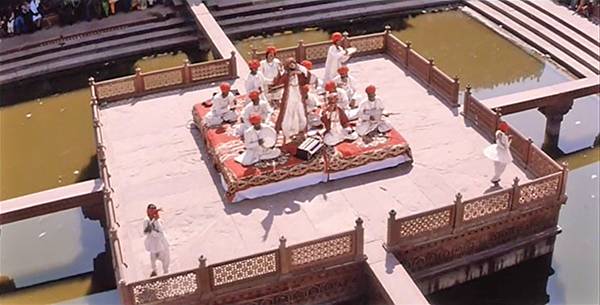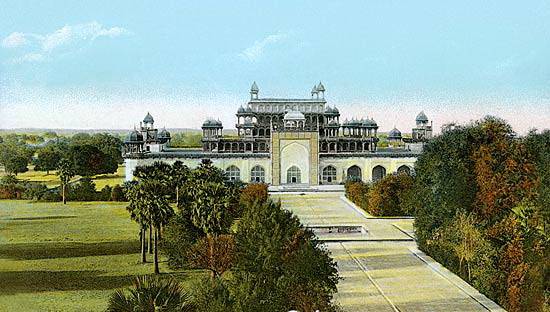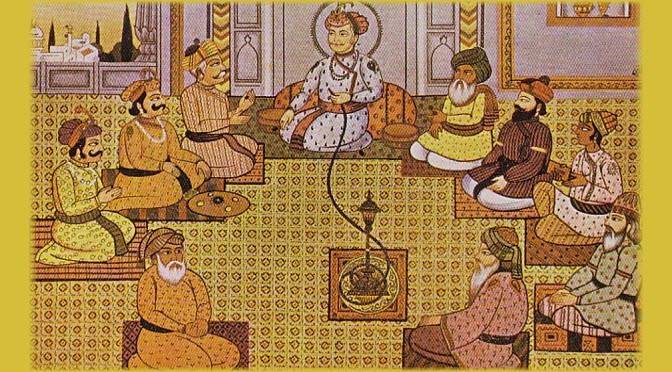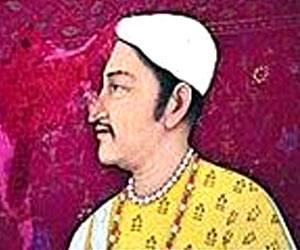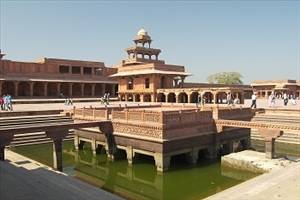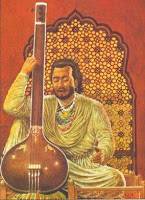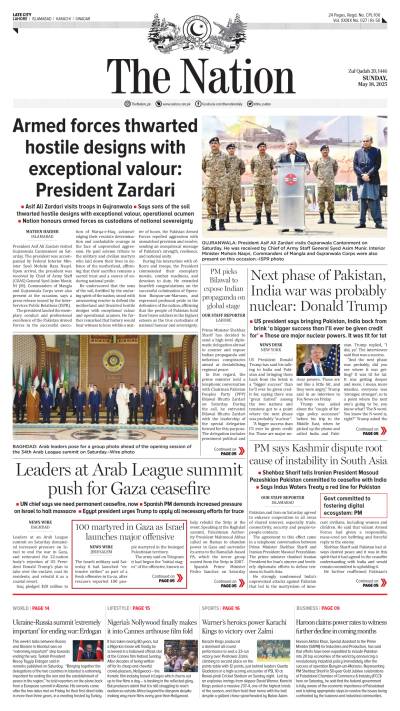Dr. Shaukat Mahmood
Abu’l Fatah Jalal al-Din Muhammad Akbar, was a descendent of the House of Timur, and the son of second Mughal emperor Nasir al-Din Muhammad Humayun. Nawab Hamida Banu Begum Sahiba also called Haji Begum was his mother. Akbar was born at Umarkot, Sindh, now in Pakistan on November 23, 1542. He died on October 27, 1605 at Fatehpur Sikri, his capital which he himself built. He was buried in his favourite garden called Bahishtabad near Sikandara, now on the outskirts of Agra. He ruled India from 1556 to 1605, a long rule of fifty years.
He had bestowed upon himself the titles of al-Sultan al-'Azam wa’l Khaqan al-Mukarram, Imam-i 'Adil, Sultan al-Islam Kaffatt al-Anam, Amir al-Mu'minin, Khalifat il-Muta'ali Abu'l-Fath Jalal ud-din Muhammad Akbar Sahib-i Zaman, Padshah Ghazi Zill-Allah, 'Arsh-Ashyani.
Humayun after his defeat at the hands of Shir Shah Suri escaped to Iran where he sayed long fifty years. In 1556 he returned but died in accident falling from the stairs of his library. Akbar, widely considered the greatest of the Mughal emperors, was only 14 when he ascended the throne. It took him almost twenty years to consolidate his power and bring parts of northern and central India into his realm. During his reign, he reduced external threats from the Afghan descendants of Shir Shah by waging wars against Afghan tribes, and at the Second Battle of Panipat he defeated the Hindu king Samrat Hemu Chandra Vikramaditya, also called Hemu Baqal. The emperor solidified his rule by pursuing diplomacy with the powerful Rajputs of Rajesthan, and by taking a Rajput princess in marriage.
Like the Italian Renaissance master Leonardo de Vinci Akbar also excelled in many disciplines of life. He was an artisan, artist, athlete, wrestler, armorer, blacksmith, inventor, animal trainer, lacemaker, technologist and theologian. He had established a workshop for himself west of Diwan-i Khas at Fatehpur Sikri. He made lasting contributions to arts and initiated a large collection of literature. He commissioned Abu’l Fadl to write the Akbar-nama and the Ain-i-Akbari, (the Constitution of Akbar). But his grandeur owes a lot not only to Abu’l Fadl but to a group of competent advisors and wazirs he had. Of all the wazirs nine are the most reputed and are known as Nav Rattan, i.e. the Nine Jewels.
Though some common names occur in almost all books of Indian history, there are some other names which remain unconfirmed like Swami Haridas, Hadrat Muhammad Ghaus and ’Aziz Kukah. Some historians include these or one or two of these among the nine and omit names like Faqir ‘Aziz and Hakim Luqman. Following are the commonly accepted jewels.
Abu’l Fadl (1551-1602) hailed from Yemen but his fifth ancestor Shaikh Musa migrated to Sindh during the middle of 15th century. He was the chronicler of Akbar's rule. He authored the biography of Akbar spending seven years in its preparation and also prepared the A’in (Constitution). He was a litterateur of the highest order and a commander of two thousand horses. His father Shaikh Mubarak was also man of letters. Born in Agra in 1551 Abu’l Fadl was assassinated by the soldiers of Jahangir in 1602.
Faidi was born at Agra in1547 and was the elder brother of Abu’l Fadl. He was a mathematician and a poet and composed verses in Persian and Arabic. Akbar appointed him tutor in mathematics for his son Jahangir. He died at Lahore in 1595.
Tansen was a court singer of Akbar, born a Hindu in 1520, He was a poet himself. Tansen learnt music from Swami Haridas and later from Hadrat Mohammad Ghaus. Prior to joining Akbar’s court he was a court musician with the prince of Mewar. Tansen became a legendary name in India and was the composer of many classical ragas. He could perform magic when singing deepak and malhar ragas. It is related once during a music session with Akbar he sang Malhar raga with the result a portion of palace caught fire. Tansen was so engrossed in his performance that he never noticed the fire. Seeing this his daughter hurriedly took the stage and started singing Malhar. Soon the rain came and extinguished the fire. The incident took place at Anup Talao an important structure in Fatepur Sikri. It is a throne built in te middle of a stepped pool and connected on all four side with narrow bridges. When Tansen died he was buried in Gwaliar. It is unclear whether Tansen converted to Islam. He was buried in Gwaliar and a tomb was built over his grave. His house still stands in Fatehpur Sikri.
Birbal (1528-1583). His real name was Maheshdas and belonged to a very poor Brahman family. His name is also quoted as Birbar by many chroniclers. He was appointed to the court of Akbar for his intelligence, and became a court jester. He was given the title of Raja by the Emperor. Birbal was also a poet and his collections under the pen name Brahma are preserved in Bharatpur Museum. Raja Birbal died in a battle. Akbar was said to have mourned for a long time on hearing the news the news of his death.
Raja Todar Mal was Akbar's finance minister and a baniya in the true sense of this word. Very parsimonious in nature he specialized in saving money. He overhauled the revenue system in the kingdom and introduced standard weights and measurements, revenue districts and officers. His systematic approach to revenue collection became a model for the future Mughals as well as the British. Raja Todar Mal was also a warrior. Before joining Akbar he was in the court of Shir Shah. In 1582, Akbar bestowed on the raja the title Diwan-i Ashraf.
Raja Man Singh was the Kacchwaha Rajput raja of Amber. Kacchwahas are reputed for building the city of Jaipur, close to Amber. This trusted lieutenant of Akbar was the grandson of Akbar's father-in-law. His family had been inducted into Mughal hierarchy as amirs (nobles).
Abdul Rahim Khan-i Khana, a poet was the son of Akbar's trusted protector and caretaker (ataliq) when he was a teenager, Bairam Khan. It was an irony of fate that it was Akbar himself who was responsible for the murder of Bairam Khan. After his his death his widow became the second wife of Akbar.
Not much is known about the other jewels like Faqir Aziz al-Din except that he was a mystic, and an advisor. Mullah Do Piyaza was a wise man and advisor of Akbar. He was also a jester or bhand of the highest calibre. Mirza Hakim also called Hakim Luqman was a medical practitioner in the royal court.

